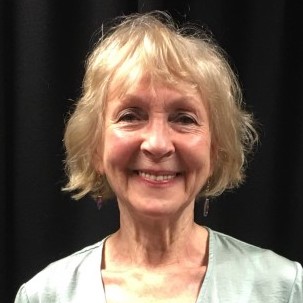Previous Artistic Director
Vicky Ireland transcript
The first play I ever did at Polka as artistic director was called ‘Rosie Blitz’ about evacuees in the Second World War and I had two little girls in it who shared the part. One was called Lucy Speed, who is now an actress and the other was Keeley Hawes, who is now quite a well known actress. They both played the part in their own way just wonderfully and we won awards for that production which was very exciting.
Over the course of my time there we did a Japanese story, we did the ‘Magic Paintbrush’ which was Chinese, we did a story from India, we did loads of them, and I cast people of that ethnicity. I made sure we all did our research and our homework trying very hard to not go into cultural appropriation, but be very respectful of stories of other places, so the children could see other people on stage and people like them, because our young audiences are very multi racial these days and its very important they feel empowered by seeing people like them on stage , so to have casting as varied as possible and also occasionally to have actors with differences on stage so that disabled children could see themselves reflected as well, which I think is very important.
So, for example, I created a play about the percussionist Evelyn Glennie who is profoundly deaf, because I wanted to explore disability with children and to show them somebody who had lived with that and has made the most marvelous career and life for herself.
She gave me her autobiography - we created a kind of tone poem play about her life and we went up to Scotland and we toured the Highlands of the islands all the way around with her play and she came down to Polka, to see it. That what a wonderful moment.
One of the joys is when you commission new work is putting your artistic team together, selecting your writer, finding how you program over a year, so you’ve got interesting topics alongside familiar books, for example, adaptions or quite content driven plays. Selecting the content of the years with the programs was the most wonderful but quite enormous challenge.
I had a children’s council and I used them as a sounding board to find out what they were reading, what they cared about, what were their concerns, what they liked about the shows they saw or they didn’t, what they liked about the building. They were very honest, and I tried to feed that back into our work. I think letting young people
into what you talk about, what you programme, what you’re doing is very important, because we shouldn’t create theatre at them, we should create theatre with them and then it has a really strong resonance and a purpose
I decided to create a production around Anne Frank. I ‘d seen the Anne Frank exhibition and the person who mounted it said he used it to bring his locale, his community to see it as a springboard into discussing their problems. And I thought that was a very interesting idea ,to use a production as a door into young people discussing not only the play, but bigger issues, so I decided to commission a play about Anne Frank and the end result was the most extraordinary piece of theatre I think , that was so powerful and in fact that play is now being done all around the world, so I’m extremely proud of that and that team that made that happen.
Places like theatres and youth theatres etc play a vital role in giving young people an identity and meeting others and sharing problems and I think get the arts in there and we’ll have a healthier, happier society.

